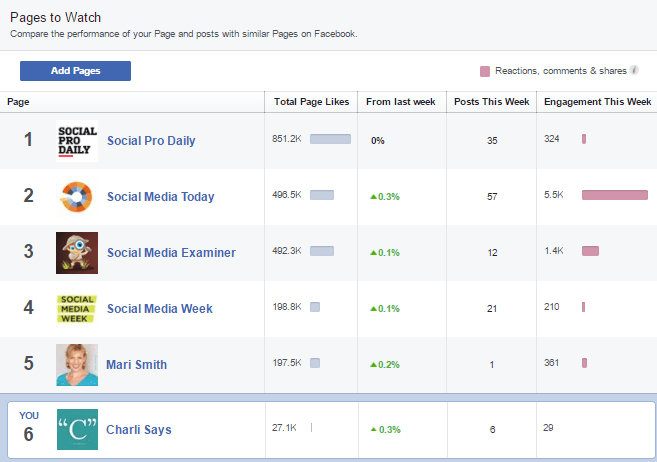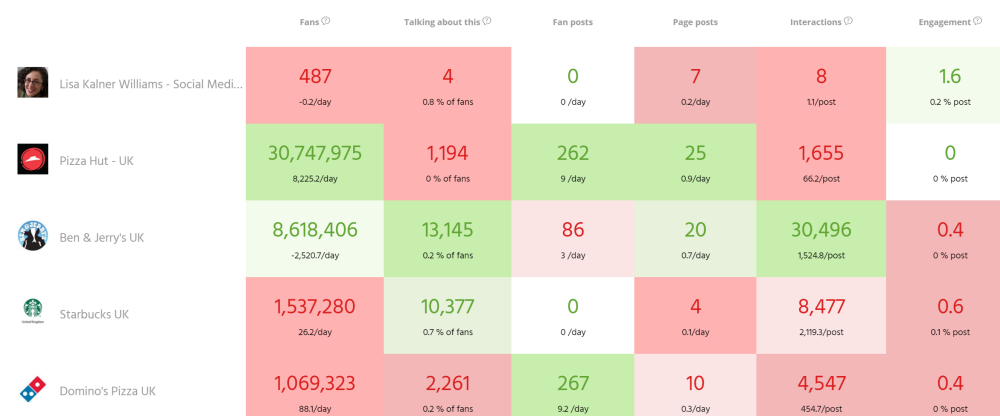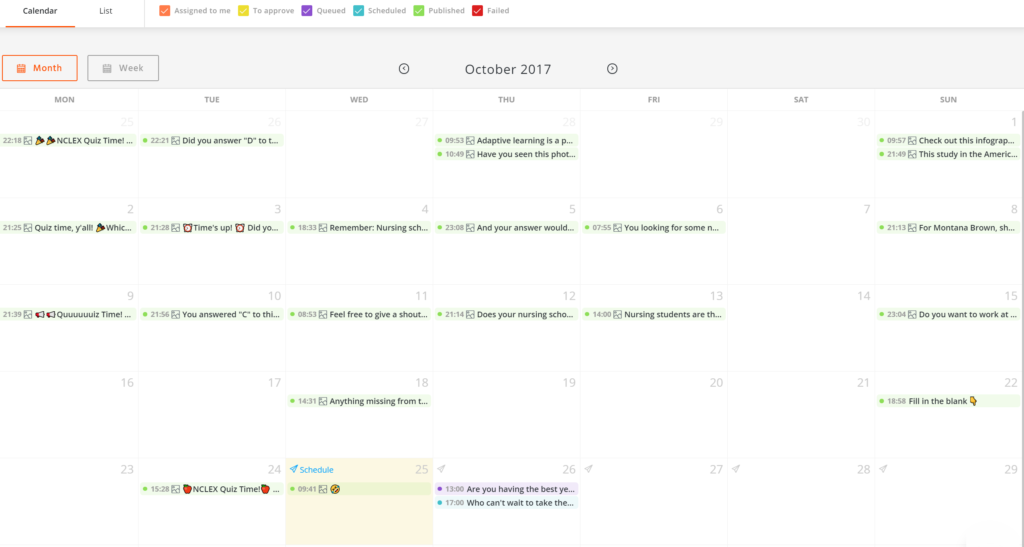Need to create a Facebook strategy on the double? Here are steps to get you started and get you good looking results.
If it hasn’t happened to you yet, it probably will. Your boss suddenly becomes aware of the budget being spent on social media and demands a Facebook strategy.
Though social media has become more data-driven, only 32% of marketers having a documented strategy.
If this is you right now, don’t panic.
Let’s run through this exercise to help you prove your skills and expertise as a social media manager and keep your boss happy.
Step 1: Create Facebook Objectives and Goals
You first need to know and document your objectives and goals.
Without goals, you have no means of gauging success or proving your social media return on investment (ROI).
Some goals for your Facebook strategy:
- Gain more exposure
- Find prospects and leads
- Increase web traffic
- Find new business partners
- Improve search engine rankings
- Reduce marketing expenses
- Close more business
Avoid getting sucked into actions as opposed to goals. For example: Your boss’s goal is not to get more retweets, it’s to generate more business.
Getting more retweets is an action that will help you to achieve this. But it’s not a goal.
Focus on advanced metrics such as lead generation, web traffic, and brand reach.
TAKEAWAY: Remember that your objectives should be S.M.A.R.T: specific, measurable, attainable, relevant, and time-bound. You don’t need to make hundreds of them, just a few significant ones. Don’t be afraid to call a meeting with your boss to make sure your goals are aligned with the bigger business goals of your company.
Step 2: Run a Facebook Audit
Before you get started on your Facebook strategy, take stock of where your fan page is right now. Doing so helps you to monitor and plan your growth and activities and get some credit for your tangible efforts later down the line.
Some items you need to record:
- Page URL
- Fan count
- Fan demographics by country
- Fan demographics by age
- Fan demographics by gender
- Monthly reach
- Monthly web traffic from Facebook
- Average monthly registrations/signups
All this information can be found inside the “Insights” tab on your Facebook page. Here, you can also access recent promotions and analyze your audience’ reaction to them.
At this stage though, we are not looking at your spend, simply at the natural state of your Facebook page.
TAKEAWAY: Work on creating a rolling Excel template with tabs for future months. Creating a Facebook strategy isn’t a one-time thing. You need to return to it each month to check on your objectives and record your growth.
Step 3: Analyze Your Competitors
Checking out your Facebook competition is an essential part of your overall strategy. You probably already know who your brand deems to be its 2-3 main competitors
When you analyze your competitors, don’t be distracted by the number of likes on their page. This can be a fairly meaningless statistic given that they may have been purchased.
Instead, look at the engagement on their posts, how often they are posting and the post types with the best reactions. If most of their posts have 10 likes and one suddenly has 3,000 then you can be sure they boosted it.
TAKEAWAY: Keeping track of your competitors is something your boss will love and an activity you can do regularly by using Facebook’s Pages To Watch feature.
To find this feature, head on over to your Facebook Page, click on Insights, at the foot of the page you can edit Pages to Watch. This will give you an easy snapshot of your brand page versus your competitors.
If you use a social media management tool like Agorapulse, you can use its “Competitors” feature.
Step 4: Identify Your Challenges
You shouldn’t shy away from this useful exercise. It will also help show your boss that success is not as simple as flicking a switch and getting 100 leads per day from your page.
When you identify your challenges, you must also research and provide logical solutions to overcome them.
Here are some tips to help you with some common obstacles social media managers find on this path.
Lack of Resources. Do you have enough resources to help you to manage your social pages? What about the graphic design you will need? If not, then look to create a realistic plan of activities and research other options for graphic design, such as Canva. You could check out Fiverr or peopleperhour for low cost, freelancing solutions.
Low Budget, If you don’t feel that the budget you have is sufficient for the goals you want to achieve, mention it. Provide tangible examples of how a small budget per post can amplify your reach and help you to achieve your goals. In your strategy it’s best to make your budget relevant and actionable. Ex- $100 per month = 20 content boosts at $5 each. The estimated reach for these boosts = 500 with a 2% CTR.
Fake Fans. It can be difficult to prove that someone bought fake fans in the past, after all, it’s not something people are that upfront about! However, if your page engagement is disproportionately low then it could be the case. Remember that Facebook only shows your posts to between 2% – 6% of your fans so if most of them are fake it will be Mission Impossible. The solution will probably be a paid campaign to acquire genuine, relevant fans so you may want to make a suggestion for this.
Step 5: Create an Actionable Plan
Now you know your objectives, it’s time to make an actionable plan. Your Facebook plan should also include a loose structure for content creation and posts across all your channels.
Some questions you will want to address are …
- How often will you post content on Facebook?
- Who will manage the posting?
- Who will reply to client messages or comments?
- How many blog posts per week will you need?
- Who will create the content?
- How often will promote the content?
- How will you track links?
- Will you have different types of posts on certain days?
- What will happen when you are on vacation?
You should aim to align your content plan with your business goals. For example, 20% percent of content will support lead generation, 10% will emphasize company culture.
TAKEAWAY: It helps to have an editorial calendar here such as the one over at Agorapulse. If you haven’t got access yet then be sure to add this into your budget. The calendar will save you tons of time by allowing you to repeat your evergreen posts, manage all your comments, messages and shares in one place and also pull off some really nice stats.
Once you have created your Facebook strategy and set your actionable goals, it’s simply a case of being consistent.
* * *
Get started on saving time and energy on your own social media management! Check out our free trial of Agorapulse to help you schedule, track, and measure all your social media efforts.










